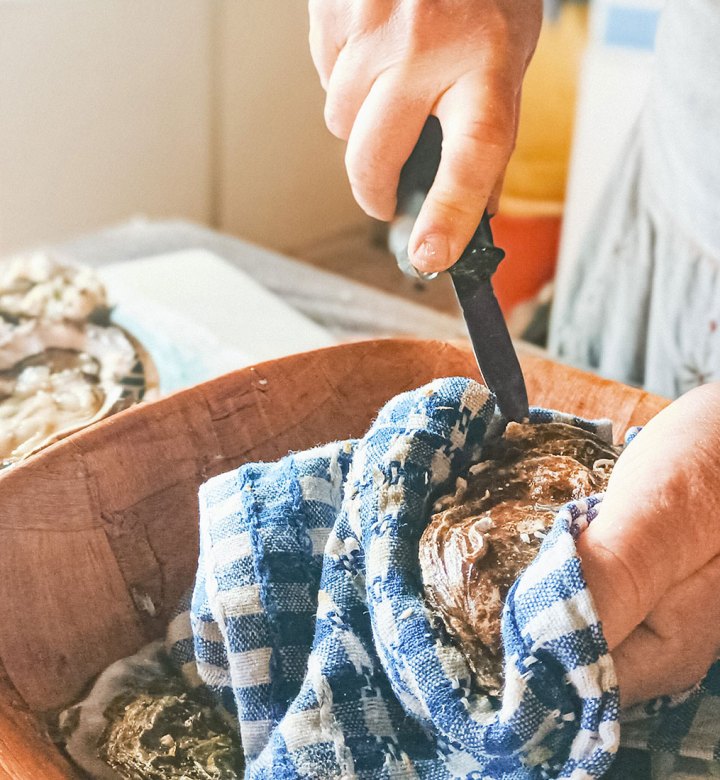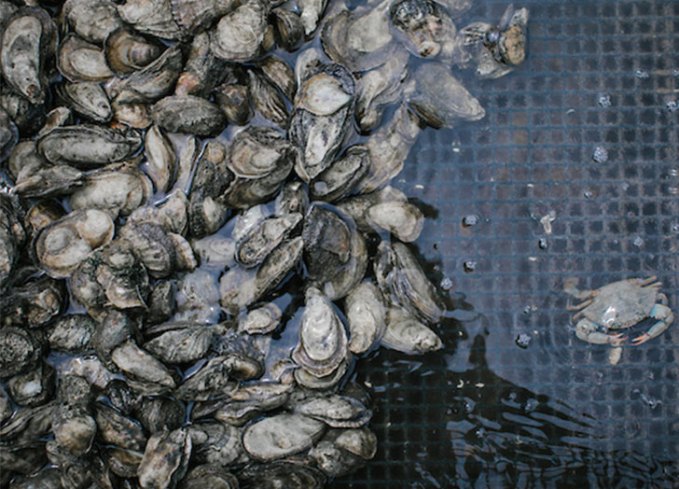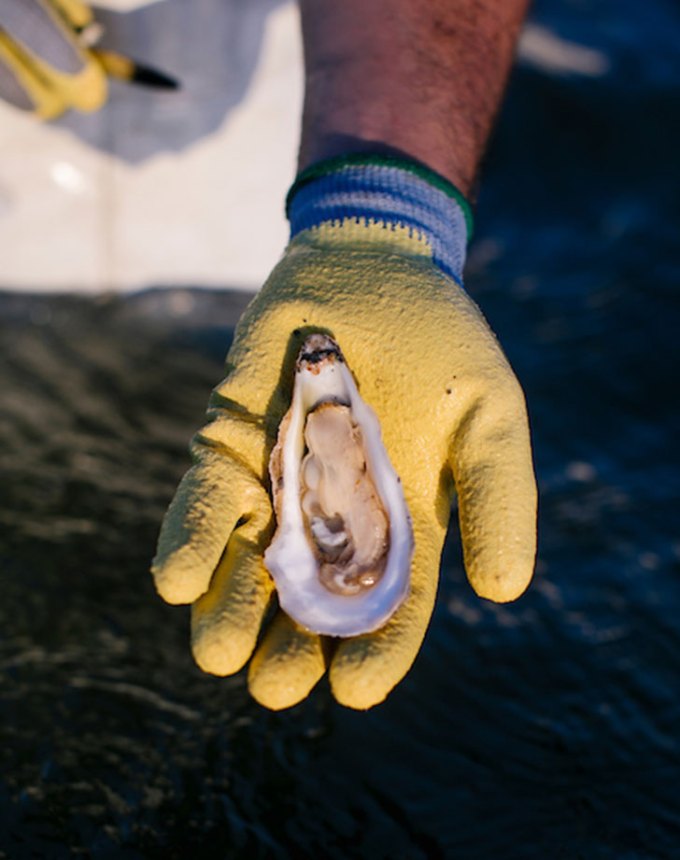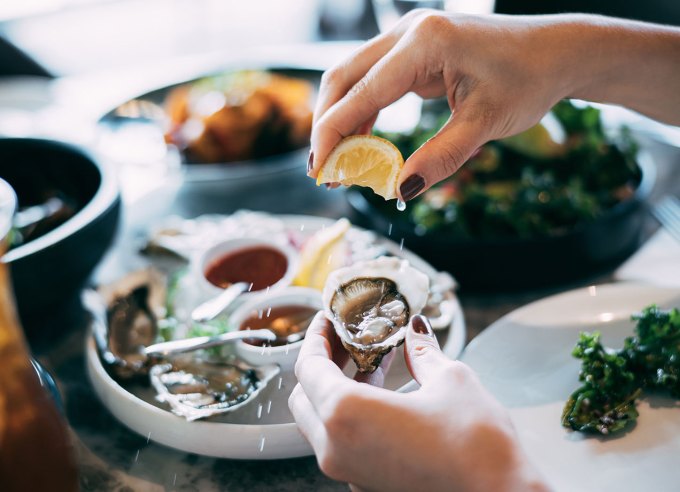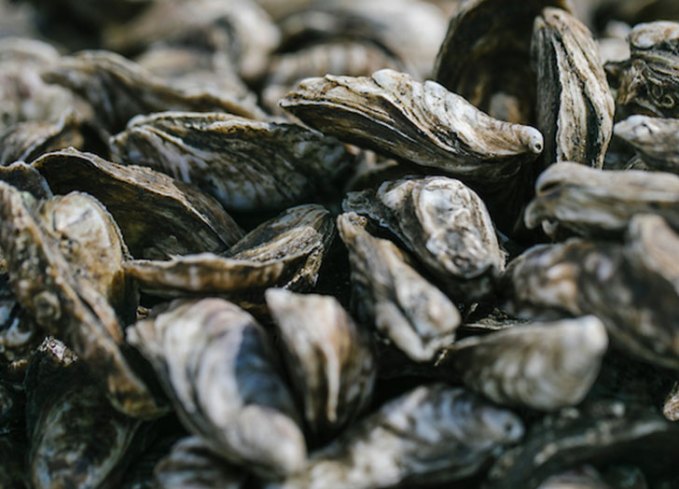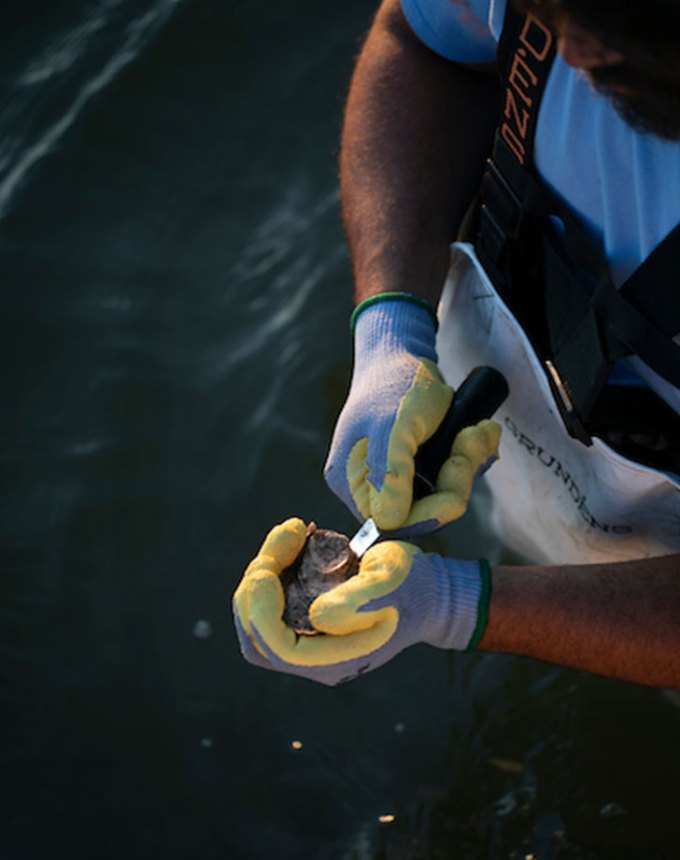Humans have been eating raw oysters for hundreds of thousands of years—164,000 to be exact, according to anthropologists who discovered a South African cave with evidence of shellfish and whale consumption. (The image above is a depiction of The Shell Mound People, or Kitchen-Middeners, a group of hunter gatherers who would create middens with discarded shellfish shells.) It’s no different stateside, says Bethea. He tells us, “Indigenous people were not only eating oysters, but they were doing it in a sustainable way. They would build middens, which are basically piles of discarded oyster shells, by returning shellfish remains to the water. More oysters grew on those oyster shells as they put them back, which is a form of aquaculture that’s called remote setting.” (In case you’re wondering, there are thousands upon thousands of middens still standing in coastal environments around the globe.)
That said, Hughes reminds us that raw or undercooked shellfish can make us sick. “Vibrio [vulnificus] causes an estimated 80,000 illnesses each year in the United States, and most of these are from people eating raw or undercooked oysters and other shellfish,” he shares. “It’s a pathogenic bacterium that’s present in marine environments like ponds, coastlines and estuaries.
“Vibriobacteria naturally live in coastal waters and can build up inside shellfish and other seafood,” Hughes explains. “Most people get infected with vibrioby eating raw or undercooked shellfish, particularly oysters. Some people get infected when an open wound comes in contact with salt water, brackish water or drippings from raw or undercooked seafood.” (Bethea also notes that a lot of people have a mild shellfish allergy without knowing it.)
Anyone can get sick from vibrio, but Hughes says people who have liver disease, cancer, diabetes, HIV or thalassemia; receive immune-suppressing therapy for the treatment of disease; take medicine to decrease stomach acid levels or have had recent stomach surgery are more likely to endure severe complications.
When vibrio is swallowed, symptoms—which can range from diarrhea to vomiting to fever—usually start within a day and last for three. Severe illness from this type of vibrio infection is rare and typically happens in people with compromised immune systems. Cases of contracting vibrio through an open wound—not raw consumption—can more often lead to death. Symptoms can include skin blistering and bloodstream infections. Victims may need intensive care or limb amputation depending on the severity, and about one in five people with this type of infection die, says Hughes.
“The vibrio case could be from handling an oyster,” explains Bethea. “It could be from peeling shrimp, handling a crab trap. A lot of guys get it from getting poked by a crab.”


